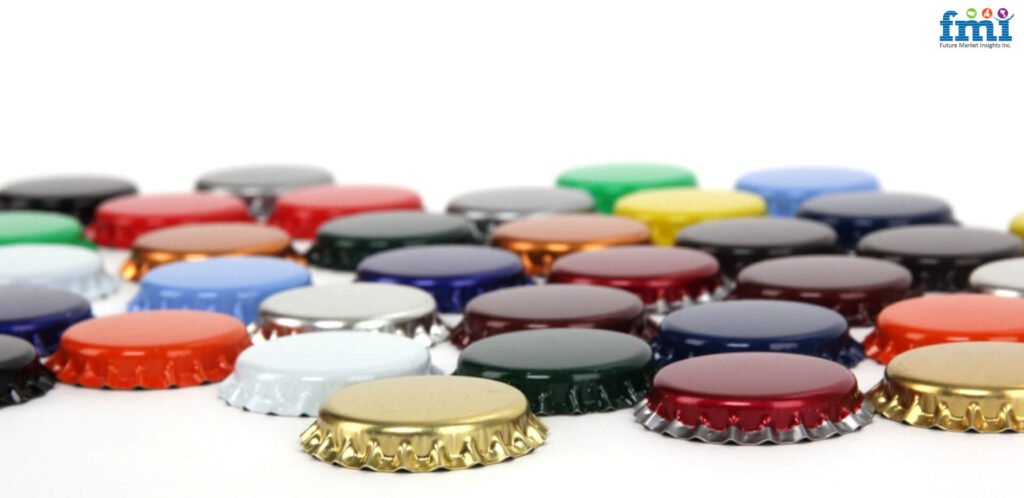
The expedition for excellence is taking place in the food and beverage industry. From the French vineries in Bordeaux to the microbrewery of Portland, the makers aim to create products that symbolize flavor, quality, and freshness.
Still, the trip doesn’t finish once the product is crafted. It has to be preserved and handed over to consumers in an ideal condition. This is where packaging comes into the scene, and one significant trend has emerged as the hero in recent years i.e. crown closures.
Crown closures, better recognized as crown or bottle caps, are acknowledged for their skill in sealing glass bottles, especially in carbonated drinks like beer, soda and soft drinks. The viability of crown caps is much more than just the fizzy beverages. Crown closures have carved their path into diverse fields of the food and beverage sector, presenting a dependable and flexible solution for preventing the contamination of the product.
As per Ismail Sutaria, Principal Consultant, Packaging Sector at Future Market Insights (FMI), “The crown closures market indicates to attain a valuation of US$ 1,389.47 million in 2033, exhibiting a slow but consistently upward CAGR of 2.40%. The escalating demand for eco-friendly packaging solutions strengthen the crown closures market expansion.”

The Advent of Crown Closures
The history of crown closures comes from the late 19th century, when they were first patented to seal bottles to make them airtight. They were originally made from cork and tied with wire. Crown closures have gone through a significant advancement over the years. Nowadays, they are generally made of metal, with a circular cap and crinkled border that is pinched around the bottle’s lip, creating a secure seal.
The adoption of crown closures is owing to their numerous advantages. Firstly, their simple design and efficiency make them ideal for sealing bottles with carbonated drinks to prevent leakage and sustain the carbonation. Secondly, crown caps come with tamper-evident features, that foster confidence regarding product safety. Lastly, they are economical and easy to apply, reigning them as supreme alternatives for vendors.
Swarming Potential: Myriad Applications of Beverage Innovations
Crown closures have been used as a synonym for carbonated drinks for a long time. Their adoption has seen a diversity to cater to a spectrum of food and beverage products.
An essential trend is the prevalence of crown closures in the craft beer industry. Craft breweries are renowned for their dedication to quality and transformation and have clutched them to secure the freshness and flavor of their brews.
Apart from beer, crown closures have also penetrated into other alcoholic beverages, including cider, and even wine. F&B is an industry where culture mingles with innovation, some winemakers have used crown closures for specific wine styles, especially those intended to be consumed immediately and for occasional pleasure. This desertion from conventional cork closures reflects a transition into convenience without compromising quality.
Whereas, crown closures are vital in the non-alcoholic beverages industry. From crafted sodas and cold-pressed juices to sparkling waters and kombuchas, they guarantee that every sip lives up to the intended flavor and fizz. Moreover, crown closures are a remarkable medium for branding, allowing beverage manufacturers can customize caps with logos, and different design elements, strengthening brand voice and customer interaction.
- As per the report of the National Bureau of Statistics of China, the country manufactured around 18.91 million metric tons of non-alcoholic drinks in July 2023, which was the dominant production in January 2023. This ascend is expected to continue, and has the potential to amplify the demand for crown caps.
Innovations in Design and Functionality
Consumers are increasingly inclined towards reducing their carbon impact. Manufacturers are doing innovations to fulfill the customer demands.
An eminent trend is the emergence of sustainable crown closures crafted with recyclable materials like aluminum. These lessen the carbon footprints on the environment and align with ecologically aware consumers who keep sustainability forward while making their purchasing decisions.
- The adoption of crown closures is led by aluminum crown closures sales, which acquire 70.8% of total consumption in 2022.
The makers are continuously striving for substitute sealing methods, like linerless closures and oxygen-scavenging liners, to elevate the shelf life and freshness of their products.
- Crown Holdings Inc. started a sustainability initiative known as Twentyby30 as part of its commitment to advancing ethical supply chains. It declared the expansion of its Aluminium Stewardship Initiative (ASI) certifications across Asia Pacific. The Aluminium Stewardship Initiative benchmarks emphasize on the ESG principles.
In the current scenario, customization is a major distinguishing factor in crown closures. Beverage manufacturers are making alliances with packaging vendors to craft distinctive and attractive designs to reflect their brand identity while luring customers. Be it embossed logos, textured finishes, or tailor-made crown closures provides a visual experience that amplifies brand commitment and buyer engagement.
- Ball Corporation rolled out cans with coded tabs, which buyers use to enhance customer loyalty. A code is printed on the end of the can, and when the can is opened, you can see the code. Companies use strategic initiatives like this as a customer acquisition tool to amplify the usage of coded metal ends on the cans.
A Glimpse into the Future Perspectives
As we draft the food and beverage industry’s future, we conclude that crown closures will be a crucial element in maintaining the perfection of F&B products. From eco-friendly materials to sophisticated tamperproof or linerless attributes, the progression of crown closures evinces wider trends in consumer choices and industry norms.
By comprehending the shifting requirements and expectations of consumers, brands can use crown closures as a tactical instrument for differentiation, security, and zero-carbon.
In the end, it can be concluded that, while crown closures seem like a small component in the roadmap of the food and beverage packaging sector, their influence on product quality and client contentment should not be underestimated.
As we raise a toast to the growth avenue of food and beverage packaging, let us acknowledge the critical role of crown closures in preserving perfection.
